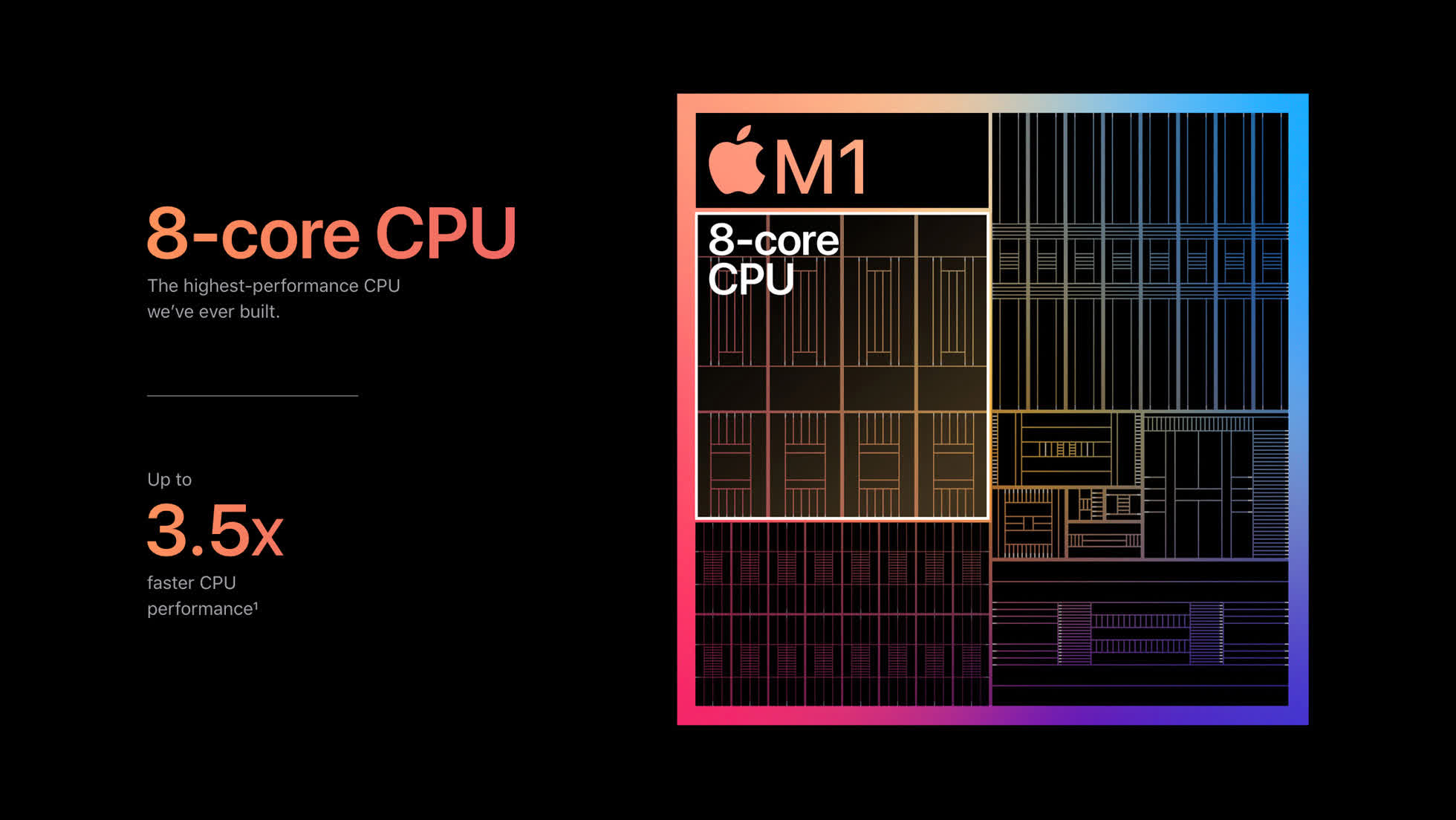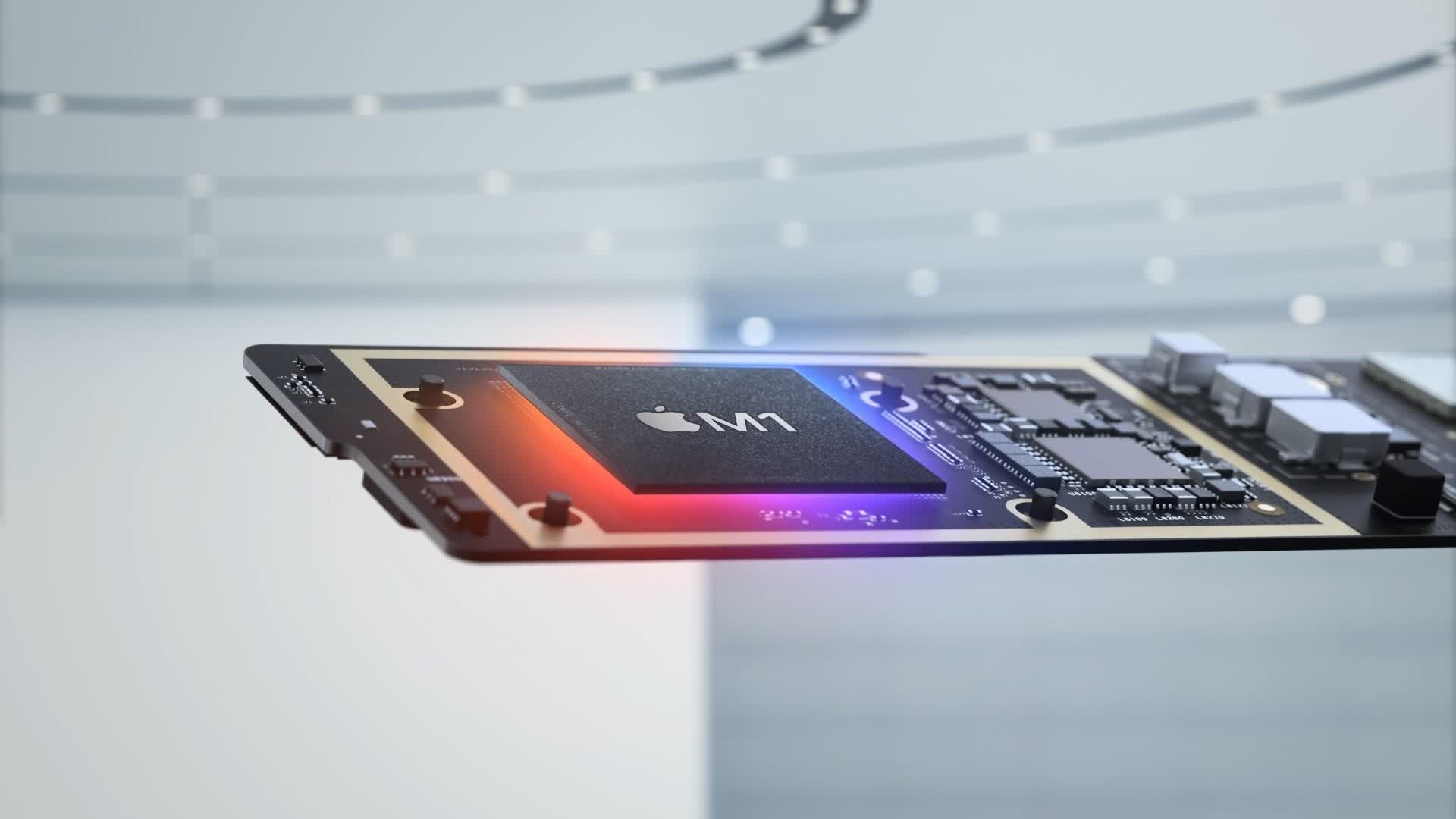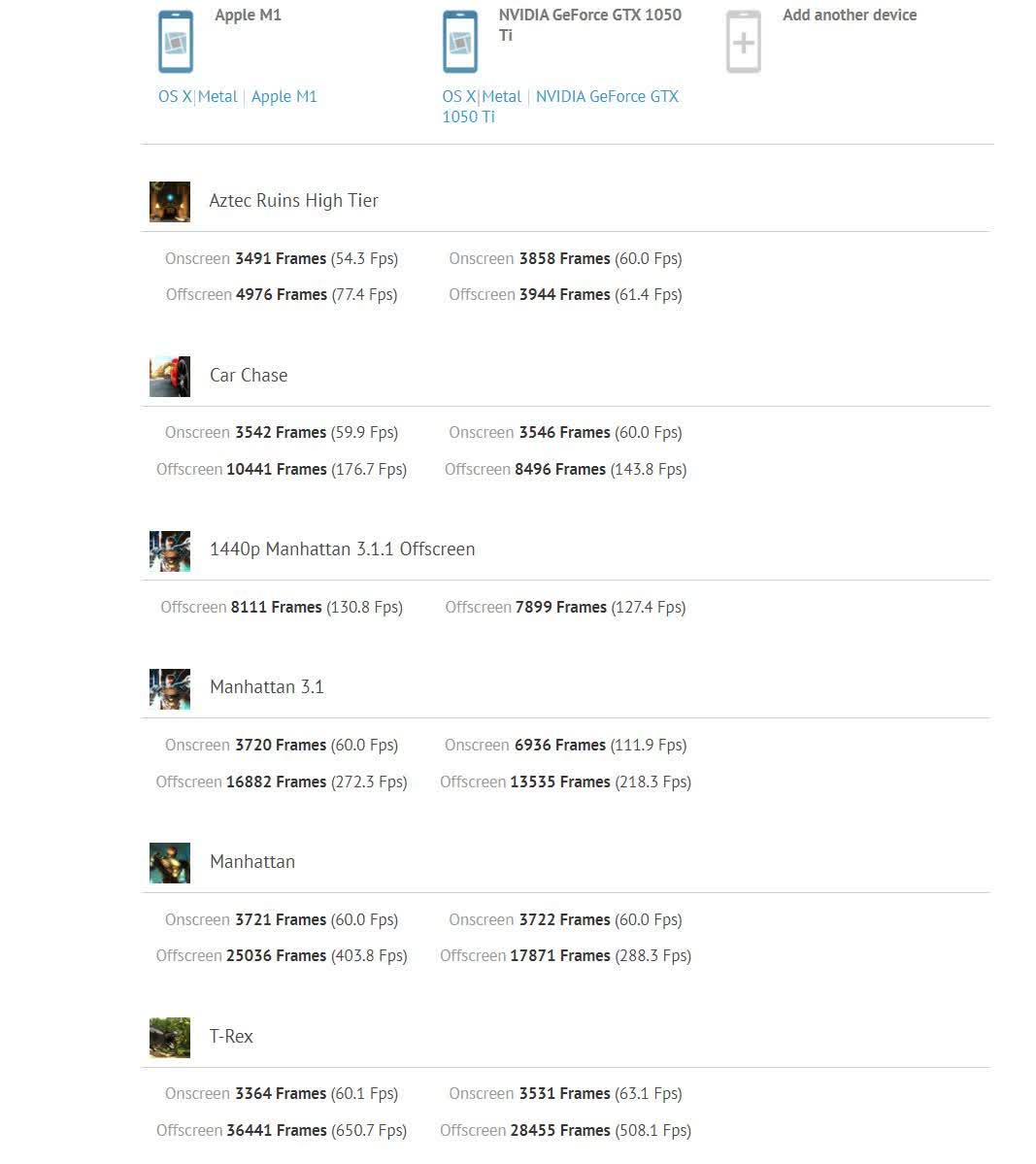TL;DR: After years of rumors and speculation that it was set to ditch Intel for its own Arm-based silicon, Apple confirmed the move last week when it unveiled the Apple M1 SoC. The Cupertino giant says the Arm-based chip offers better performance than previous Intel solutions found in its Macs, and a new benchmark suggests its graphical prowess is also impressive, beating some older dedicated graphics cards from Nvidia and AMD.
Follow-up: Apple Silicon Macs review roundup: Impressive performance and battery life in a familiar design
According to Apple, the M1 chip includes an eight-core GPU that provides the world's fastest integrated graphics in a low-power chipset, able to execute nearly 25,000 threads simultaneously and delivering up to 2.6 TFLOPs of throughput, which is likely its single-precision (FP32) performance. The company said it is "3.5x faster" than competitors, though it never went into further detail.

Now, benchmarks for the M1 chip have appeared on GFXBench 5.0 (via Tom's Hardware). Going up against a GTX 1050 Ti, presumably using a Thunderbolt 3-connected external enclosure, with both systems running macOS, Apple's chip outperforms Nvidia's product by around 25 to 30 percent in most tests. It's the same story with the Radeon RX 560.
The caveats here are that GFXBench 5.0 is designed for benchmarking smartphones, and that the systems were running Apple's Metal API, making direct comparisons difficult. But it's still a very impressive showing against two dedicated 75W TDP graphics cards. Interestingly, the GTX 1050 Ti is the second most popular card among Steam users taking part in the company's hardware survey.
The first Macs to come with an M-series chipset are the MacBook Air, which starts at $999, the $699 Mac Mini, and the $1,299 MacBook Pro 13.

